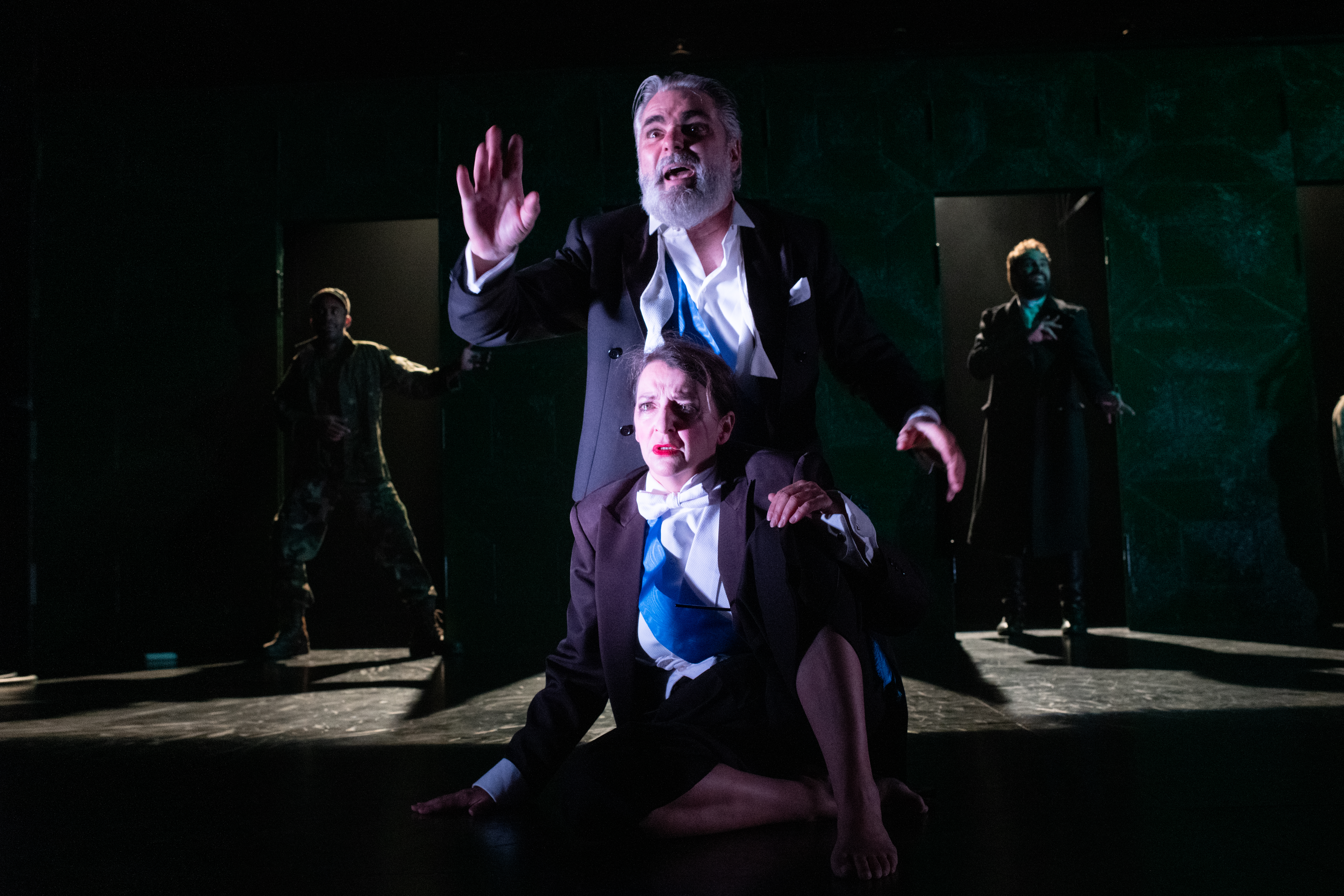Ernesto Arias as King Basilio and Goizalde Núñez as Clarín
The stars must have been well aligned from the mid 16th to the end of the 17th Century, as all over Europe, an extraordinarily creative period flourished, 'La Vida es Sueño' had its premiere in 1635 and is as relevant today as it ever was.
The international theatre company Cheek by Jowl , founded in the UK by director Declan Donnellan and designer Nick Ormerod in 1981, has made a name presenting a substantial number of plays in French, Russian and English, such as Measure for Measure with Moscow’s Pushkin Theatre (1999), and Jean Racine’s Le Cid in French.
Their recent presentation of one of the most famous plays of the Spanish Golden Age, Life is a Dream (La Vida es Sueño) by Pedro Calderon de la Barca at the Barbican, is a co-production with Spain’s Compañía Nacional de Teatro Clásico, under the Artistic direction of Lluís Homar and Lazona Productions. Despite the play being in Spanish and in verse (with English surtitles), the Barbican Theatre was packed and the audience was responsive and enthusiastic.
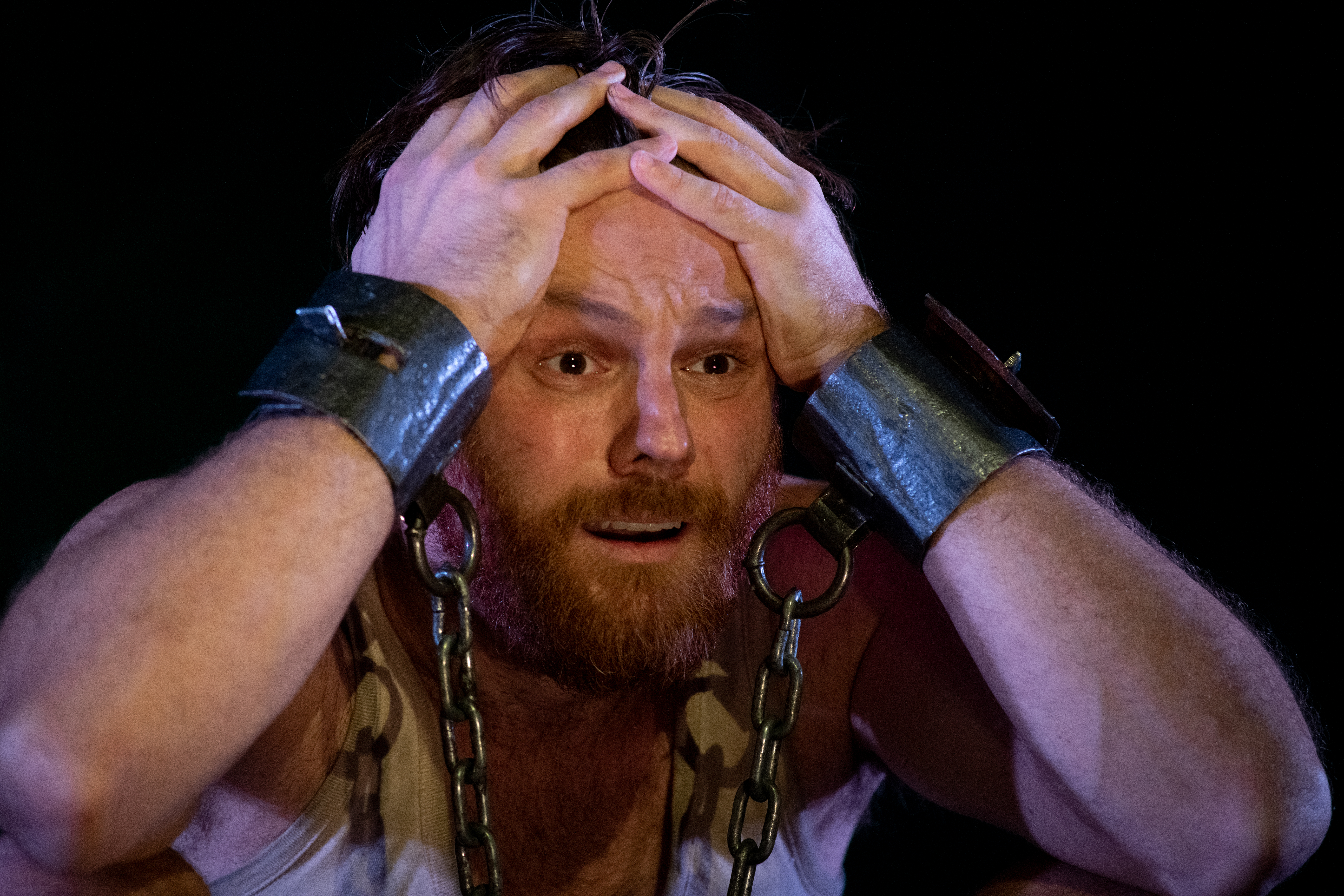
Alfredo Noval as Segismundo
It is a complex work, divided into three acts with two main themes. Firstly, the incarceration by King Basilio (Ernesto Arias) of his son, Segismundo (Alfredo Noval), as he desperately tries to defy an astrological prophesy that Segismundo would become a cruel tyrant. Secondly, the predicament between Rosaura and Astolfo (Manuel Moya), as she desires to avenge his betrayal and violation of her honour. However, Astolfo has his mind firmly fixed on how to inherit the throne.
The intricacies of the plot are so complicated as to feel like a rococo piece of music, even a Feydeau farce with the large number of twists and turns, disguises, false identities and private agendas. This play has melodramatic elements and a sharp edge, as humour and tragedy collide. At many points there is reference to the theatrical forms of the Commedia Dell’ Arte where a number of colourful characters introduce comedy, often as farce or physical slap-stick humour.
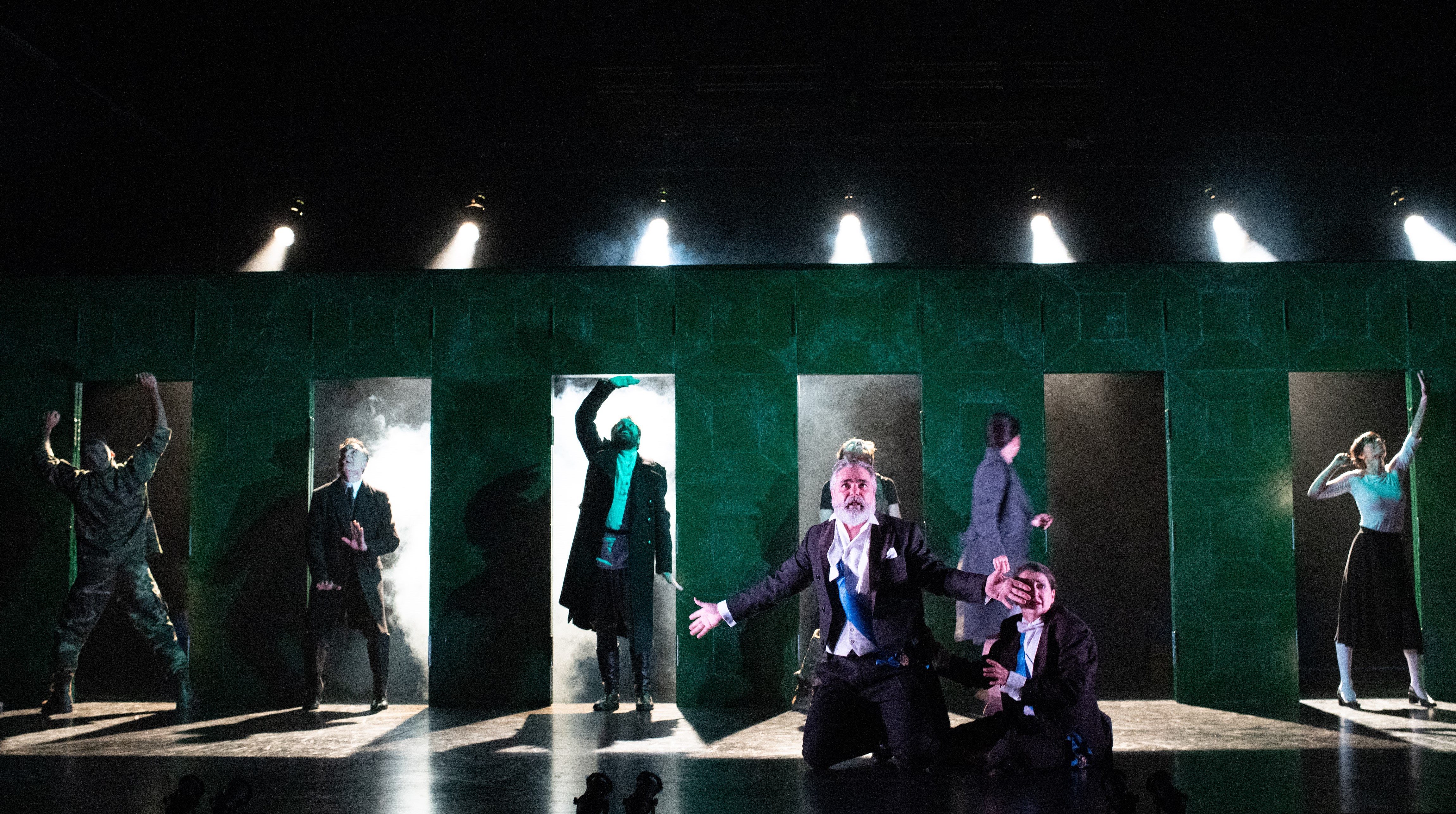
The company on stage with King Basilio ( Ernesto Arias) centre.
The king has declared his son dead, not admitting he is held in a tower. Finally, in a moment of weakness, and even curiosity as to the power of fate, he permits the young prince to have one day on the throne. But, after years of being incarcerated, this is Segismundo the Unready, and, immediately, he displays atrocious lascivious and violent behaviour, and puts paid to his opportunity of a luxurious reinstatement by hurling a servant over the wall to his death. The horrified King resolves to return him to the tower, but how?

Rebeca Matellán (Rosaura) and Alfredo Noval (Segismundo)
Segismundo is drugged and when he awakes back in the tower, they try to persuade him that the whole experience of freedom has been nothing but a dream. Torn apart by this, the young prince resolves that if he should be freed, he would cherish liberty and the precious gift of life and use his energy for good.
Yo sueño que estoy aquí,
destas prisiones cargado;
y soñé que en otro estado
más lisonjero me vi.
¿Qué es la vida? Un frenesí
¿Qué es la vida? Una ilusión,
una sombra, una ficción,
y el mayor bien es pequeño;
que toda la vida es sueño,
y los sueños, sueños son.
I dreamed that I am here , Trapped in this prison, Yet I dreamt that I had a more pleasant fate. What is life? A frenzy? What is life? An illusion, A mere shadow, a fiction? That the greatest good is small , That all our life is but a dream, And dreams themselves, only a dream.
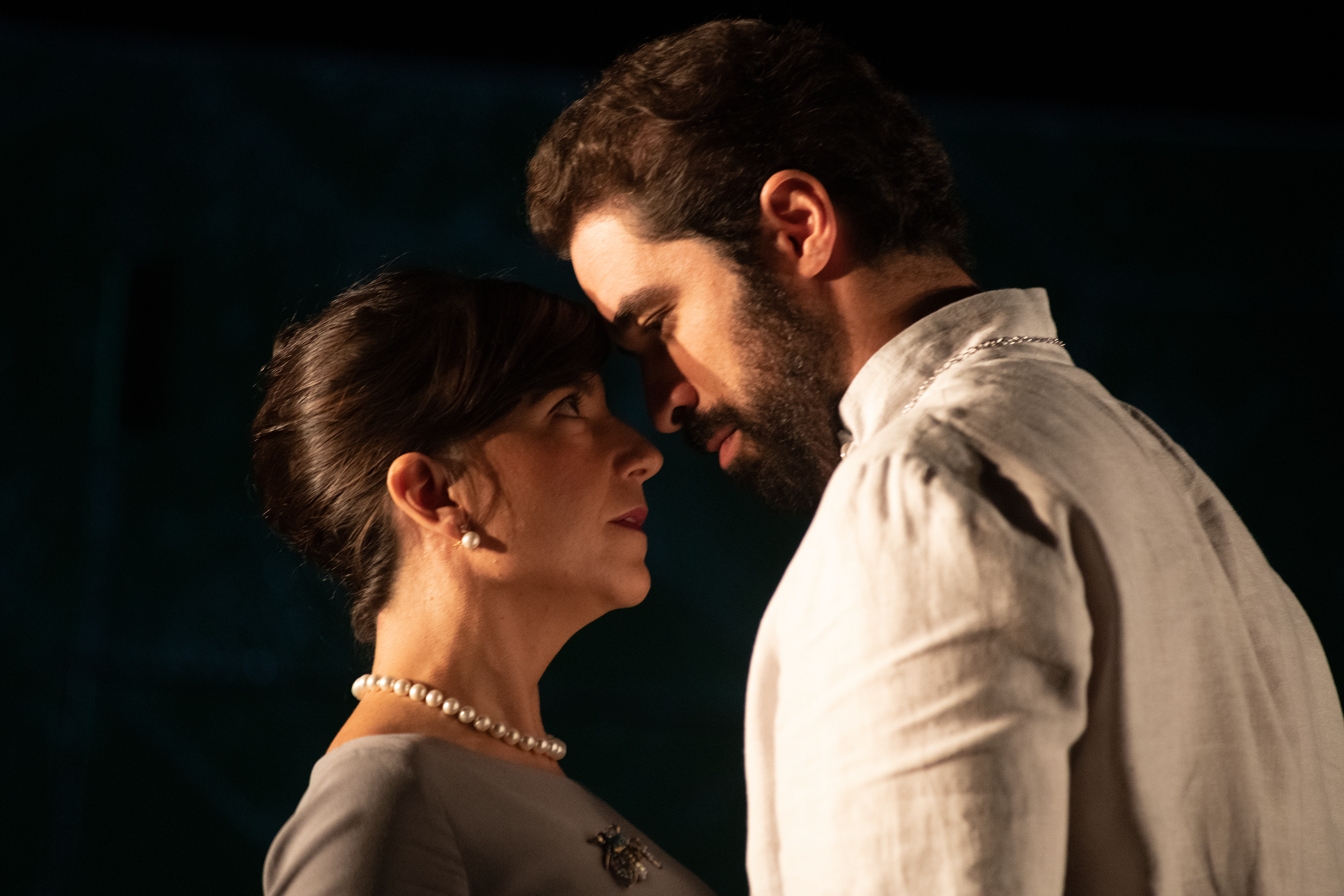
Irene Serrano ( Estrella) with Manuel Moya (Astolfo)
After years living in a dark cavernous jail, Segimsundo did not know who he was, and as Plato once wrote, man lives in a twilight world of dreams, from which he can only be freed and see the light, when he develops the concept of goodness.
This is a play of many layers, infused as it is with many different philosophical concepts, including the idea of original sin and the fall, even the suffering that is required to rise above it. Calderón de la Barca uses all these themes to protest against the fatalism of Astrology and predictions, as well as against all absolutist principles that can supress freedoms, and how their misuse, can lead to civil wars.

Life is a Dream, the company with Segismundo ( Alfredo Noval)
Rosaura (Rebeca Matellán), daughter of the jailer Clotaldo (David Luque) arrives at the tower at the start of the play, as she is coming to avenge her betrayal by Astolfo, the King’s nephew, who dishonoured her before abandoning her. But Here she arrives disguised as a lad, of whom her father Clotaldo knows nothing. He is unaware of her existence and true identity, having in turn abandoned her mother 20 years earlier. But Rosaura produces a sword that Clotaldo had left the mother, so he realizes that this must be his son, whom he then takes to introduce to the King.
Calderón expresses through Segismundo, as well as Rosaura, that the stronger the repression, the greater the explosion when it is set free. When the people of the country discover they have a prince who is heir, they rise up to free him from his tower. But Segismundo, not knowing if he dreams or not, decides he will reveal his generous nature and frees Clotaldo and refuses to kill his father. At this point the King decides to abdicate and willingly leave his throne to his son and his subjects to their fate.
The surtitles sadly, could not convey the music and beauty of the language in this play. The set was dramatic and simple at the same time, with a series of openings, that added to the visual impact of movement with the comings and goings, coupled with Ganecha Gil’s particularly effective sound effects and Josete Corral’s lighting design.
These plays traditionally use a lot of music. Here it was largely left to one character, the servant Clarín (Goizalde Núñez), who, gently and emotionally, played the role of the buffoon (el gracioso) dancing and singing with much humour and grace, eliciting a lot of sympathy in the process.
There is plenty of irony in the way Segismundo chooses to pair off Rosaura with Astolfo (who had abandoned her), thus restoring her honour. He himself, chooses to marry Estrella, a happy ending and a suitable compromise. In all this, Calderón is cynically making political comments, attacking superstitions and unquestioning beliefs, even hypocrisy.
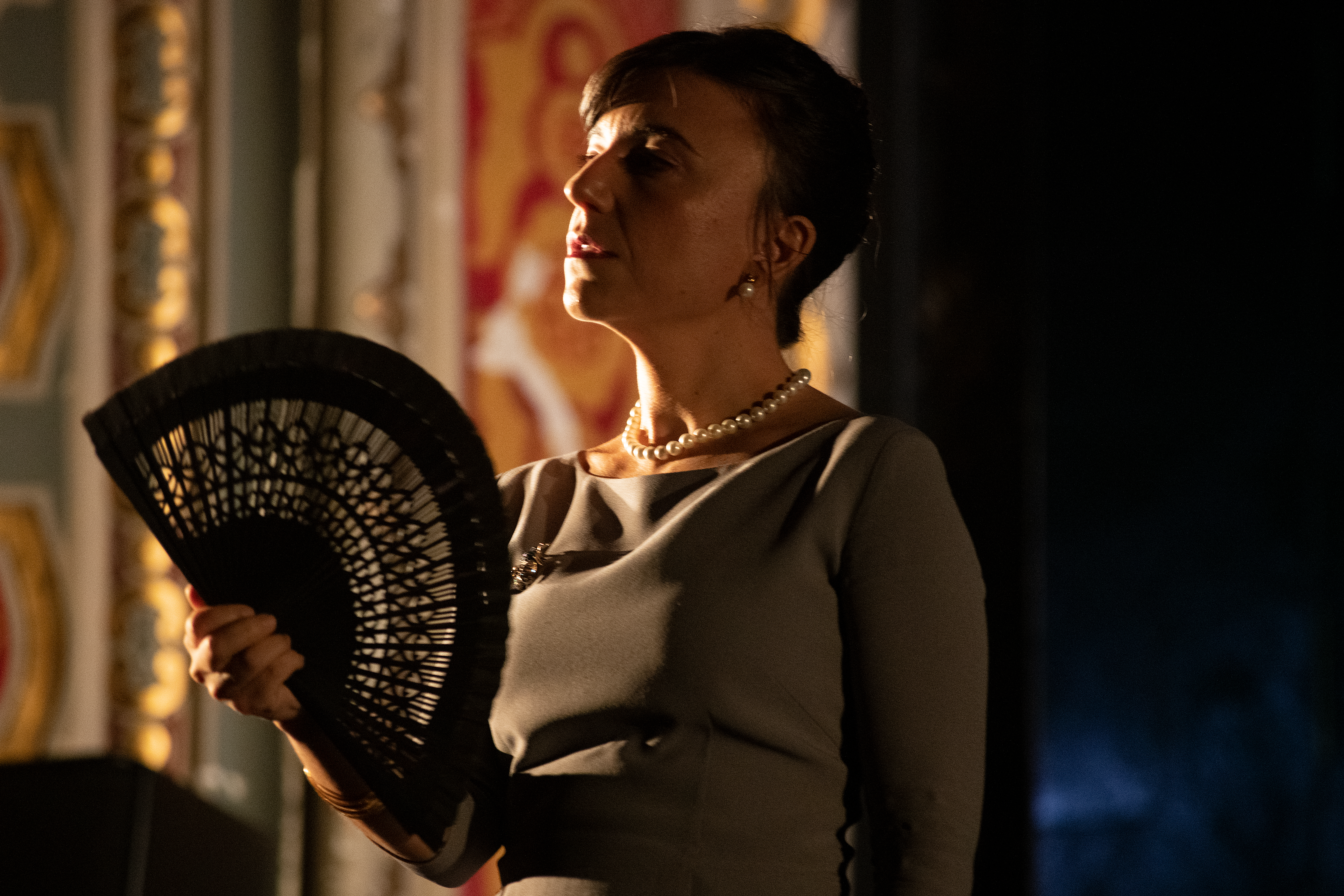
Irene Serrano ( Estrella)
This production, despite its melodramatic tones, seemed slightly sanitized. Was it bowing to the waiting to be offended brigade? Normally, works of that period would be bawdy, with much clowning in the body language and suggestive, even rude gestures., Here they were very controlled as if the objective was to emphasize the philosophical elements above all, the comedy therefore was not brought to the fore.
The result is that we did not empathize so much with the characters, although the reconciliation of the King and his son was very emotional and beautifully timed.
The all-round performance of the lead character Segismundo was powerful. He used melodrama and tragedy to get across to the audience. He physically walked off the stage and down into the stalls to interact with the people but, despite an element of comedy, it did not feel convincing. He was slightly let down by some of the other characters, who, on occasion, came across as brittle and stiff by comparison. It was nevertheless, delightful to hear the exquisite Spanish verse and enjoy the lyrical elements of the writing. It was not called the Golden Age for nothing!
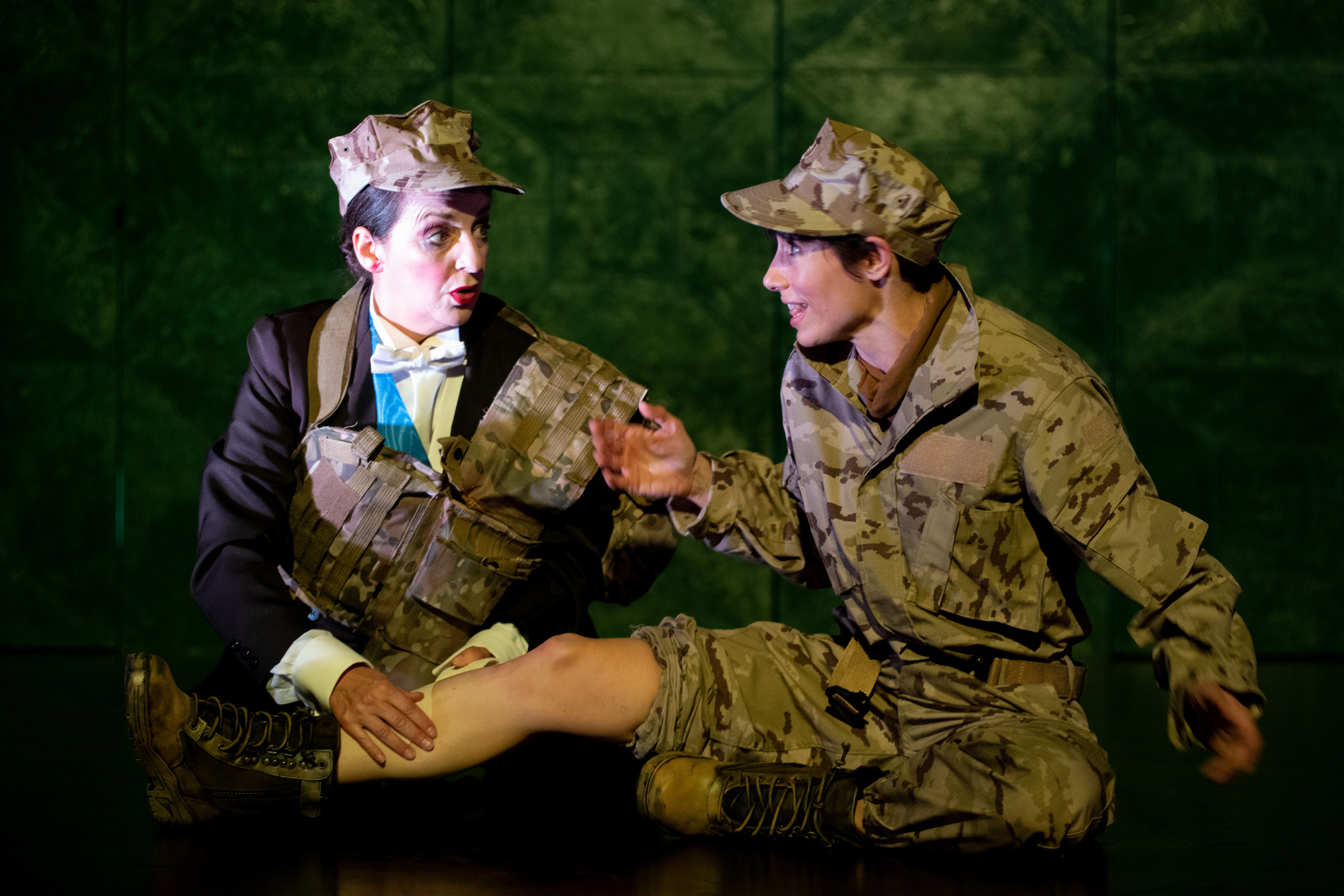
Goizalde Núñez (Clarín) and Rebeca Matellán (Rosaura in disguise)
Life is a Dream has been a very interesting production in a foreign language using English surtitles and I would welcome many more works from abroad to be presented in this lively way. I recall the international theatre festivals at the Aldwych Theatre, where authentic productions from all over the world were brought to us, from Russia, France, Italy, Japan and more, with live audio translations. It was the highlight of the theatrical year. Now Cheek by Jowl are reintroducing the idea in their own way, which is a triumph.
Sadly, Calderón de la Barca’s death in 1681 marked the end of the Golden Age in Spain.
LIFE IS A DREAM (LA VIDA ES SUEÑO)
Written by Pedro Calderón de la Barca, in a version by Declan Donnellan and Nick Ormerod
Cast: Ernesto Arias, Prince Ezeanyim, David Luque, Rebeca Matellán, Manuel Moya, Alfredo Noval, Goizalde Núñez, Antonio Prieto and Irene Serrano.
Director: Declan Donnellan; Designer: Nick Ormerod; Assistant Director: Josete Corral; Lighting: Ganecha Gil; Sound Design and Composer: Fernando Epelde; Movement Director: Amaya Galeote; Dramaturgy Advisor: Pedro Villora; Assistant Designer: Alessio Meloni; Lighting Assistant:
Javier Hernandez; Costume Assistant: Elena Colmenar; Sound Assistant: Gastón Horischnik; Interpreter: Juan Ollero; Publicity Design: Javier Naval; Executive Producer (LAZONA): Miguel Cuerdo; Company Manager (LAZONA): Elisa Fernández
All photographs by Javier Naval.


